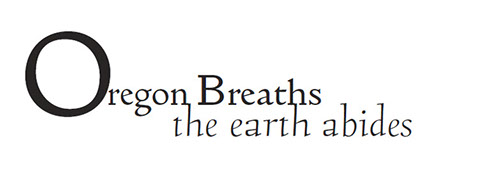The Oregon Trilogy
Click below to download each pdf.
Resize View to see the 2 page spread.

Oregon Territory
the Earth Abides
“As are the leaves, so is the race of men; Some the wind scatters on the ground, and some the fruitful forest, when the spring-tide comes, Puts forth; so note we also with mankind; One comes to life, another falls away.” ~Homer

Oregon Territory
Respiration
At night, the tree consumes Oxygen and holds on to it. At night, the tree, expels carbon dioxide. Light, the giver of photosynthesis, helps the cycle of the tree making sugars. Photosynthesis is when the plant converts light energy into chemical energy. The “dark” process. this chemical energy (created by the light process) into sugars that the plant can use as energy for itself- so that it can live.

Oregon Territory
Human occupation
These exhales foreshadow the complex development of domesticated animals, nomadic seasonal migrations, residential agriculture and city development. I use exhale in the literal same manner of imprinting a wall as rearranging the landscape to fit human choices and needs. The geology time line of human occupation is so small compared to how the earth has shape shifted over many millennium; the human hand print is that first exhaled breath. It seems the glacial human impact and envelopment of the earth has altered the landscape in vision, in deed, in destruction with some indifference, and in reverence of the human home.
The Three Volumes composing the Oregon Breaths
The images in these volumes take great liberty in binding them together. In some ways, these are documentary views simply in front of the camera during sorties within the wilderness of the Oregon Territory. Layers of ash from volcanic blowouts get sandwiched in different encountered strata. In one case, a white pumice layer may be uplifted and slabbed over another layer and easily seen in a ravine; the same geologic event a mile away may end up in uniquely folded layers simply as an invisible sediment capturing old sequoia leaves only to be revealed slowly by centuries of flooding. It is the same in making and seeing these photographs. Some are simple views; some have composited layers from different times. Some images may frame disconnected separate distant geologies together.
The viewer takes this in with the inhale and the perception is the simple exhale of looking. The process repeats: with the exhale the preparation for readiness to inhale some fresh oxygen occurs. And this is precisely the exhale that we bring to looking. One thanks that exhale for it allows perception.

